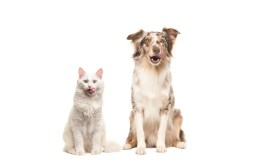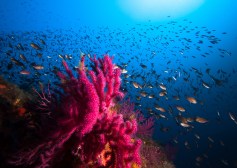Climate Change and Animal Behavior: What Research Reveals About Survival Tactics
As climate change continues to reshape our planet, its impact on animal behavior is becoming increasingly evident. From altered migration patterns to shifts in breeding seasons, animals are adapting in remarkable ways. This article delves into the various effects of climate change on animals and highlights some fascinating survival tactics that species are employing to cope with changing environments.
Changing Habitats and Migration Patterns
One of the most significant effects of climate change is habitat alteration. As temperatures rise, many animals are forced to migrate to find suitable living conditions. Research has shown that species such as birds and marine life are changing their migration routes in search of food sources or breeding grounds that suit their needs better. For instance, certain bird species have started arriving at their nesting sites earlier than usual due to warmer weather, which can disrupt food availability for their young.

Adaptations in Breeding Seasons
Climate change is also influencing the timing of breeding seasons among various animal species. Many mammals and birds rely on seasonal cues such as temperature and the availability of resources (like food) for reproduction. Studies indicate that some species are adjusting their reproductive cycles—breeding earlier or later—to adapt to new environmental conditions. However, these changes can create mismatches between the timing of births and the peak availability of resources needed for offspring survival.
Behavioral Changes in Feeding Habits
With shifting ecosystems comes a need for animals to adapt their feeding behaviors. As prey species move or alter their activity patterns due to climate pressures, predators must follow suit or risk starvation. For example, polar bears have been observed spending more time hunting seals on land rather than ice due to melting habitats. Similarly, herbivores may shift their grazing habits based on plant phenology influenced by rising temperatures—a phenomenon that can cascade through food webs.
New Survival Strategies: Cooperation and Social Dynamics
In response to climate challenges, some animal species exhibit increased cooperation within groups as a survival strategy. For instance, researchers have noted that certain social animals like wolves may work together more effectively when hunting due to decreased prey availability caused by habitat loss from climate change. Such behavioral adaptations highlight not only individual resilience but also enhanced social structures designed for survival under duress.
The Role of Conservation Efforts
Understanding how climate change affects animal behavior is crucial for conservation efforts aimed at protecting biodiversity. By recognizing these changes early on, conservationists can develop strategies tailored specifically for vulnerable species affected by shifting climates—whether it be creating wildlife corridors or implementing protected areas where habitats remain stable despite broader environmental shifts.
As research continues into the effects of climate change on animal behavior, it becomes increasingly clear how interconnected our ecosystems are—and how vital it is for us humans to take action against global warming not only for ourselves but also for countless wildlife around the globe.
This text was generated using a large language model, and select text has been reviewed and moderated for purposes such as readability.


